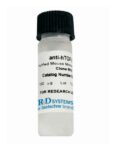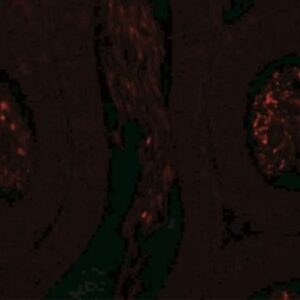Description
14-3-3 proteins are present as multigene families in most organisms. Signal-induced phosphorylation has the ability to change protein function. Sometimes, however, phosphorylation is not enough to change a protein’s function. 14-3-3 proteins play an important role of bringing signal transduction to completion. They regulate many cellular processes that are important in cancer biology, such as apoptosis and cell-cycle checkpoints.
Predicted to react with all mammals based on sequence homology.Heat-mediated antigen retrieval is recommended for the staining of paraffin sections. A suggested positive control for immunohistochemical applications is normal brain tissue. In Western blot, this antibody detects a band at ∽30kDa in HEK293 cell lysate.
Specifications
| Antigen | 14-3-3 gamma |
| Classification | Polyclonal |
| Gene | YWHAG |
| Gene Alias | 14-3-3gamma, D7Bwg1348e |
| Host Species | Rabbit |
| Quantity | 100 μL |
| Primary or Secondary | Primary |
| Target Species | Bovine, Chicken, Human, Mouse, Ovine, Rat |
| Product Type | Antibody |
| Isotype | IgG |
| Applications | ELISA, Immunohistochemistry (Paraffin), Western Blot |
| Conjugate | Unconjugated |
| Gene Accession No. | P68252, Q5F3W6, P61981, P61982, P68253, P61983 |
| Gene Symbols | YWHAG |
| Immunogen | Synthetic peptide of acetylated N-terminal amino acids 1-10 of sheep. Peptide sequence: Ac. V D R E Q L V Q K A C of sheep 14-3-3 gamma. |
| Regulatory Status | RUO |
| Gene ID (Entrez) | 7532 |
| Content And Storage | Store at 4°C or Store at -20°C if preferred |
| Form | Serum |








Reviews
There are no reviews yet.